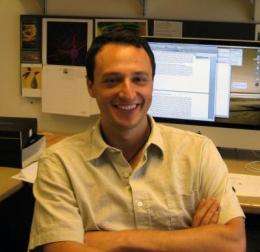Researchers create autistic neuron model

Using induced pluripotent stem cells from patients with Rett syndrome, scientists at the University of California, San Diego School of Medicine have created functional neurons that provide the first human cellular model for studying the development of autism spectrum disorder (ASD) and could be used as a tool for drug screening, diagnosis and personalized treatment.
The research, led by Alysson R. Muotri, PhD, assistant professor of pediatrics, will be published in the November 12 issue of the journal Cell.
"This work is important because it puts us in a translational mode," said Muotri. "It helps expand and deepen our understanding of autism, from behavioral disorder to developmental brain disorder. We can now look for and test drugs and therapies and see what happens at a cellular and molecular level. That's something we've never been able to do with human autistic neurons before."
Rett (RTT) syndrome is a neurological disorder in which affected newborns display normal development until six months to 1½ years of age, "after which behavioral symptoms begin to emerge," Muotri said. "Progressively, motor functions become impaired. There may be hypotonia or low muscle tone, seizures, diminished social skills and other autistic behaviors."
RTT was the focus of the research because its genetic underpinnings are well-understood. The condition is caused by mutations to the X-linked gene encoding a protein called MeCP2. By knocking out or adding the relevant gene in animal models, researchers can create the damaging effects of RTT or rescue impaired cells.
The new research goes further. Muotri and colleagues at the Salk Institute for Biological Studies and Pennsylvania State University developed a culture system using induced pluripotent stem cells (iPSCs) derived from RTT patient's skin fibroblasts – cells that typically give rise to connective tissues. Instead, the human RTT-iPSCs were reprogrammed to generate functional neurons that, compared to normal control cells, featured fewer synapses, reduced spine density, smaller soma size, altered calcium signaling and electrophysiological defects – all indications that the deleterious alterations to human RTT neurons begin early in development.
The scientists also exposed human RTT-iPSCs to insulin growth factor 1 or IGF1. In a mouse model with RTT syndrome, IGF1 has been shown to improve symptoms, suggesting the protein might have similar potential for treating RTT and other neurological disorders in people. Muotri said IGF1 appeared to rescue some RTT-iPSCs, reverting some neuronal defects, though exactly how IGF1 works remains unknown and requires further investigation.
"This suggests, however, that synaptic deficiencies in Rett syndrome, and likely other autism spectrum disorders, may not be permanent," Muotri said.
Muotri said creation of a human RTT cell culture provides a new and unexplored developmental window before disease onset and possibly a common model for future studies of ASDs.
Autism spectrum disorder (ASD) is a range of complex, varying neurodevelopment disorders characterized by social impairments, communication difficulties and restricted, repetitive and stereotyped patterns of behavior. It is not known what causes ASD. Scientists have identified a number of genes associated with the disorder, but environmental factors likely play a role too.
Autistic disorder (sometimes called autism or classical ASD) is the most severe form. Milder conditions include Asperger syndrome, Rett syndrome, Childhood Disintegrative Disorder and Pervasive Developmental Disorder Not Otherwise Specified (usually referred to as PDD-NOS).
The Centers for Disease Control and Prevention reports the prevalence of autism to be approximately 1 in every 110 births in the United States. An estimated 1.5 million Americans live with the effects of ASD, which occurs in all ethnic and socioeconomic groups and affects every age group, though males are four times more likely to have ASD than females.

















